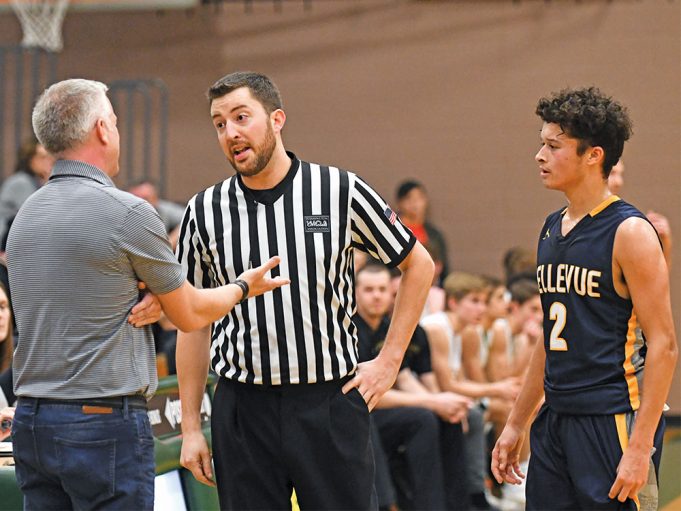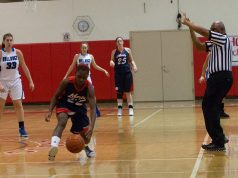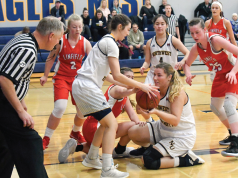O ne of the great things about basketball is that although there are many constants to the way the game is played, there are other parts of the game that are continually changing. Players are getting bigger and faster, we are seeing more drives to the basket, and offenses feature new sets. One such set gaining in popularity is a play that creates an opening for a jump shot using “elevator screens.”
A screen is a legal action by a player who, without causing contact, delays or prevents an opponent from reaching a desired position. Per rule 4, there are several implications regarding the legality that are a part of this rule, including stance, time and distance, and incidental contact. A traditional screen involves a stationary player but it is also possible to have ball screens. In the last few seasons, we have seen a new type of screen: the elevator screen.
Where does it occur?
This play is commonly seen at the top of the key, creating the most space for the shot. However, it is possible to run this screen anywhere on the court where teams would like to create an opening for a shot, such as the endline. The screen can be run from an out-of-bounds play or out of any typical halfcourt offensive set.
What is legal?
It is legal for the offense to run this play as long as the screens are set within the rules. The player must have both feet on the court, inbounds, and within his or her vertical plane with a stance approximately shoulder width apart. NCAAM and NCAAW have specifically stated that the inside of the screener’s feet may not be wider than shoulder width.
When is it illegal?
The elevator screen is illegal when the defender is not given time or distance to avoid the contact by stopping or changing direction. Timing is important here, as moving or “closing the door” too soon would create illegal contact on the defender. Separation is essential to the success of this play. If A3 cannot create it, the elevator doors will close incorrectly and it will be an obvious foul on the offense. The most important part of the screen is the player that is coming off it.
Identify the good outside shooters on both teams
What are the cues an official is looking for?
A cue that an official should look for is identifying the good outside shooters on the team. This is where it is important to watch the teams warm up prior to the game to find the key players. Good players usually emulate game-like situations and provide good hints in helping you during the game. Also, an official should be focusing on the shoulders, elbows, knees and feet of the screeners to see if there is any illegal contact while setting the screen.
How does coverage change/adjust in preparation of an imminent elevator screen?
For coverage on all screens, an official should be able to extend his or her coverage to be able to see the entire play. Off-ball officiating by the crew is definitely a great help when identifying these screens and making rulings on this type of play.
In this ever-evolving game, there are constantly new play sets as teams get more sophisticated and as trends rise. Television has popularized the spread of innovative offensive and defensive techniques and they travel down from the professional ranks to youth basketball. It is important to stay up to date with these new ideas and to be able to recognize them as they come to our levels. Being prepared for plays like this will help to improve your situational officiating and to identify elevator screens when they happen in your game.
What's Your Call? Leave a Comment:
Note: This article is archival in nature. Rules, interpretations, mechanics, philosophies and other information may or may not be correct for the current year.
This article is the copyright of ©Referee Enterprises, Inc., and may not be republished in whole or in part online, in print or in any capacity without expressed written permission from Referee. The article is made available for educational use by individuals.

















